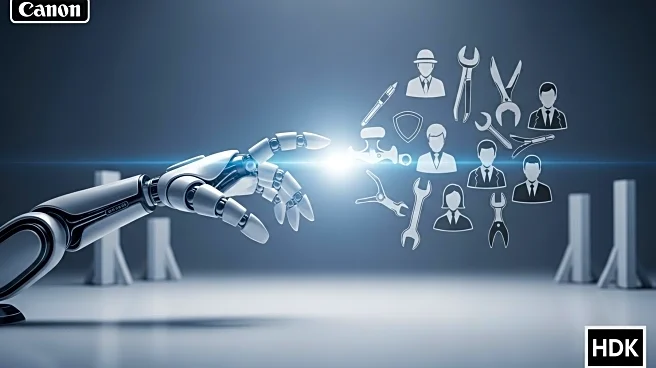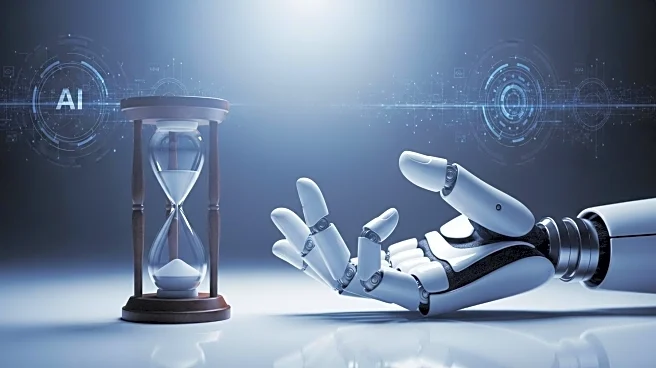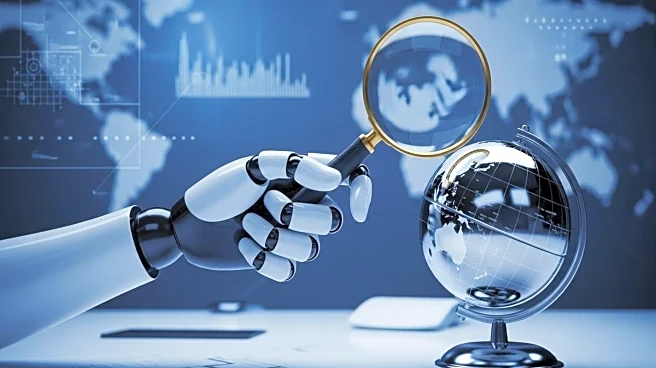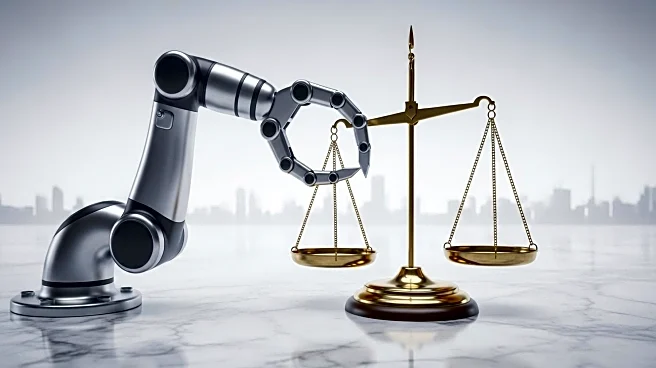What's Happening?
A recent analysis by the Society for Human Resource Management (SHRM) indicates that approximately 15% of U.S. jobs, equating to about 23 million positions, are at heightened risk of automation. The study identifies jobs as highly automatable if at least 50% of their tasks can be automated, including through artificial intelligence. Computer and mathematics jobs are particularly vulnerable, with 32% of these roles deemed highly automatable. Despite the potential for automation, SHRM notes that nontechnical barriers such as legal restrictions, cost effectiveness, and client preferences often prevent complete displacement of human workers. These barriers suggest that job transformation, rather than outright displacement, may be a more common outcome as AI technologies advance.
Why It's Important?
The findings from SHRM highlight significant implications for the U.S. workforce and economy. As automation technologies continue to evolve, industries may face substantial shifts in employment dynamics, requiring workers to adapt to new roles or acquire new skills. The potential for job transformation rather than displacement suggests a need for strategic workforce planning and retraining initiatives. Employers must navigate the balance between leveraging AI for efficiency and maintaining human elements in roles where client preferences or regulatory requirements demand it. This shift could impact sectors like personal care, healthcare, and education, where human interaction is crucial, while sectors like computer and mathematics may see more rapid automation adoption.
What's Next?
As AI technologies continue to develop, organizations will likely need to reassess their workforce strategies to accommodate both technological advancements and human resource needs. Employers may invest in training programs to upskill workers for roles that require human input alongside automated processes. Additionally, ongoing discussions around legal and ethical considerations of AI in the workplace may lead to new regulations or industry standards. Companies will need to address potential biases in AI systems and ensure equitable treatment of employees as automation becomes more prevalent.
Beyond the Headlines
The broader implications of increased automation in the workforce extend to ethical and cultural dimensions. As AI systems take on more tasks, questions about job security, privacy, and the role of human judgment in decision-making processes become more pressing. Organizations must consider the long-term impact of automation on employee morale and societal perceptions of work. The shift towards automation also raises concerns about economic inequality, as workers in highly automatable roles may face greater challenges in securing stable employment.










